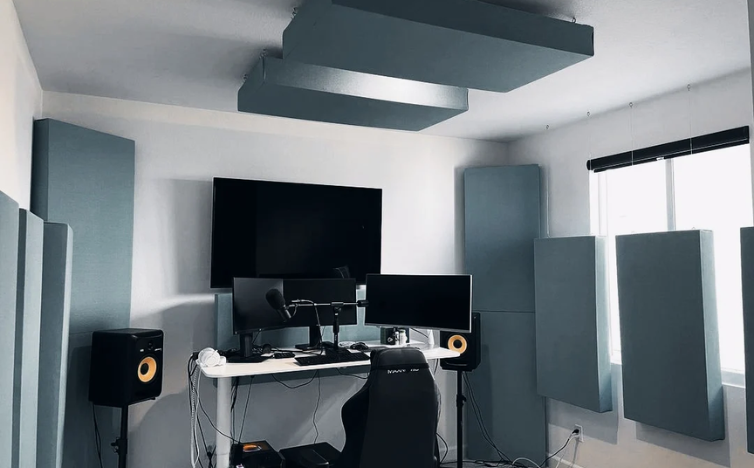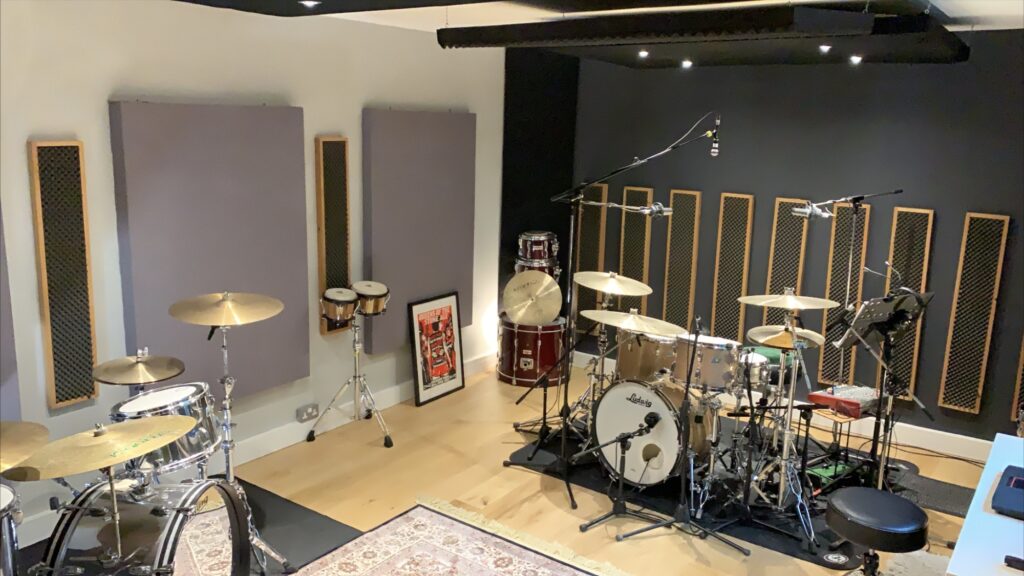Small rooms often suffer from poor acoustics due to sound reflections, echoes, and standing waves. Without proper acoustic treatment for small rooms, audio quality can be compromised, whether for home studios, offices, or entertainment spaces. This guide explores practical solutions to optimize sound in compact areas.
At Waseem Technical, we specialize in professional acoustic services to transform your space into an acoustically balanced environment.
Why Small Rooms Need Acoustic Treatment
Small rooms amplify acoustic issues because sound waves bounce quickly between walls, creating unwanted echoes and frequency buildup. Common problems include:
- Flutter Echo: Rapid reflections between parallel surfaces.
- Bass Buildup: Low frequencies accumulate in corners, muddying the sound.
- Uneven Frequency Response: Certain frequencies are exaggerated or canceled out.
Proper acoustic treatment for small rooms minimizes these issues, ensuring clearer audio for recording, mixing, or casual listening.
Key Acoustic Treatment Solutions

1. Bass Traps for Low-Frequency Control
Low frequencies are challenging in small rooms. Bass traps, placed in corners, absorb excess bass and reduce boominess.
- Porous Absorbers: Made from dense foam or fiberglass, they absorb mid to high frequencies but are less effective for deep bass.
- Resonant Absorbers: Designed specifically for low frequencies, these are ideal for tight spaces.
2. Acoustic Panels for Reflection Control
Sound reflections from walls and ceilings cause comb filtering and phase issues. Strategically placing acoustic panels at reflection points improves clarity.
- First Reflection Points: Install panels where sound first bounces off walls (use the mirror trick to locate them).
- Ceiling Clouds: Hanging panels above the listening position reduces ceiling reflections.
3. Diffusers for Balanced Sound
While absorbers reduce reflections, diffusers scatter sound waves, creating a more natural acoustic environment.
- Quadratic Diffusers: Effective for breaking up flutter echoes without over-deadening the room.
- Placement: Best used on rear walls or ceilings to maintain liveliness.
4. Sealing Gaps and Decoupling
Small rooms benefit from minimizing sound leakage and vibrations.
- Weatherstripping: Seal doors and windows to prevent external noise interference.
- Isolation Pads: Decouple speakers from desks to reduce structural vibrations.
Budget-Friendly DIY Acoustic Treatment
If professional acoustic services are out of budget, try these cost-effective solutions:
- Heavy Curtains: Thick drapes absorb high-frequency reflections.
- Bookshelves: Filled bookshelves act as diffusers.
- DIY Panels: Rockwool or fiberglass wrapped in fabric can be mounted on walls.
Professional Acoustic Services for Optimal Results
While DIY methods help, professional acoustic treatment for small rooms ensures precision. At Waseem Technical, we offer:
- Room Analysis: Identifying problem frequencies and reflection points.
- Custom Solutions: Tailored absorption, diffusion, and bass trapping.
- Installation: Expert placement for maximum effectiveness.
Call us: Contact Waseem Technical Soundproofing Expert in Doha For Soundproofing: +971 50 209 7517
Conclusion
Improving acoustic treatment for small rooms enhances sound clarity, reduces unwanted noise, and creates a more professional listening environment. Whether through DIY methods or professional acoustic services, addressing reflections, bass buildup, and diffusion is essential.




